|
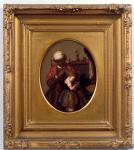
"Negro Nurse with a Child"

George Fuller (1822-1884)
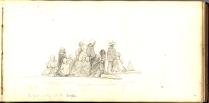
"Negroes waiting at the depot"
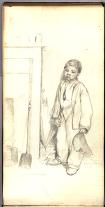
"Our page, Harry"
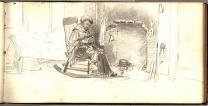
African-American woman sewing
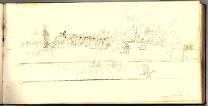
"Negro Funeral"
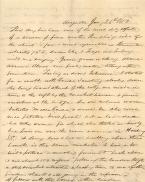
Letter to Aaron Fuller from son George re: slave market
|
Summary and Objective
Students will understand that African American slaves and their successors were not only documented by American artists they were artists themselves.
Students will understand this by viewing George Fuller's sketches of slaves in the south and comparing them with later artists' paintings of African Americans such as Winslow Homer and the African American artist Henry O. Tanner.
Students will then create a sketch of themselves either playing an instrument or riding on a small boat in turbulent waters.
Teaching Plan
Step 1.
Students will view the sketches and letter from the PVMA collection by George Fuller, who traveled to the Southern states as a portrait painter and also made sketches of how the African slaves lived on the plantations. The drawings will initiate a discussion on what the slaves living quarters were like, as well as their clothing and lifestyle during the mid to late 1800's. After reading Fuller's letter to his brother Aaron about the slave market, the students will be asked to think about the contradiction of a person being sold with the inherent sadness that must be felt by the slaves. How does Fuller express this in his paintings/drawings?
Step 2.
The students will then view the painting by Fuller: "Negro Nurse with a Child," and compare this with his sketches of slaves. The goal will be to compare how the slave nurse is interacting with the child as her nurse, and her style of clothing compared to the plantation workers in his sketches. Does she appear to be a slave? How do her clothes appear compared with the woman in the rocking chair? Why do you think she has better clothes.
Step 3.
The students will view "Taking a Sunflower to Teacher," and "Gulf Stream" by Winslow Homer, and learn about his life as an arist during the Civil War times. They will be asked to describe the imagery portrayed in both paintings and describe how the people in the paintings must have lived. The students will then be asked to look for details that might lead to who the boy was, and why he was giving his teacher a sunflower, or riding a boat alone in turbulent waters. Specifically the students will be asked to notice how the boy is dressed in both paintings, the butterfly on his shoulder, their facial expressions, and their positions in the painting. We will discuss stereotypes and how some of them might pertain to these portraits.
Step 4.
The final image the students will view will be "The Banjo Lesson," by Henry Ossawa Tanner. They will learn about his life as an African American artist in the lates 1800s, and how he became famous in Paris, France before his birth country America. The students will compare this painting with Fuller and Homer's paintings, and describe how the two people in Tanner's picture are intereacting compared with Fuller's painting of the "Negro Nurse with a Child." How are they similar and different? What does the background look like in Tanner's painting? How are they dressed? What room of the house are they in? What is their age difference? Do you think Tanner knows how to paint compared with the other artists?
Step 5.
The students will be asked to describe what will happen next in Homer's painting of the "Gulf Stream," and "Taking a Sunflower to Teacher." Why do you think the artist painted these images of African American? How are they different or similar to Tanner's paintings of his own life as an African American?
Step 6.
After some review and discussion about the artists and their subject matter, the students will choose an artist's style to create an image. They can decide to create a portrait of themselves playing an instrument, or riding a small boat in troubled waters. Their portraits will be rendered as sketches similar to George Fuller's pictures, focusing on the details of themselves and lightly drawing in their surroundings.
Step 7.
After the sketches are finished, the students will show their drawings and talk about why they decided on that image of themselves, as well as what it was like to draw themselves playing an instrument or riding alone on a small boat in the middle of the ocean surrounded by sharks.
|




